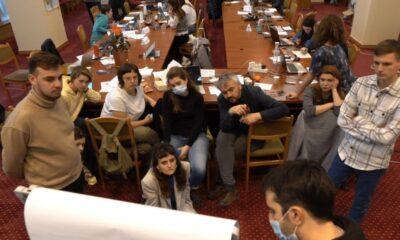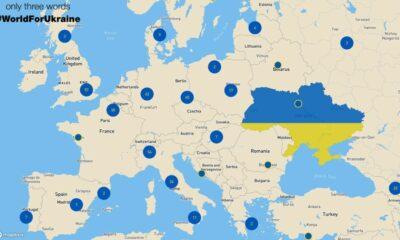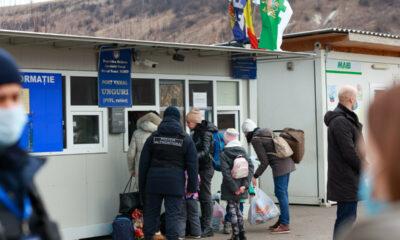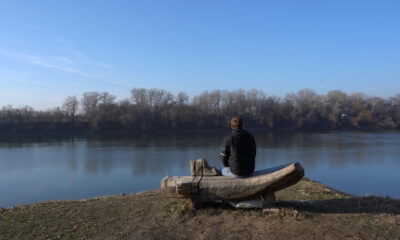Economy
Moldova: Hooked on Remittances
Reading Time: 4 minutesAs young wage-earners continue to emigrate, this former Soviet nation becomes the country most dependent on money sent from abroad
As young wage-earners continue to emigrate, this former Soviet nation becomes the country most dependent on money sent from abroad
by S. Adam Cardais, Business Week
Since independence from the Soviet Union in 1991, Moldova rarely gets mentioned without the accompanying phrases "failed state," "Europe’s poorest country," or "the only post-Soviet nation with a Communist Party president."
Now there’s a fourth—"the world’s most remittance-dependent economy." According to the World Bank’s Migration and Remittances Factbook for 2008, 36.2 percent of Moldova’s GDP in 2007 came from money sent home by emigrants. The country tops the rankings together with Tajikistan.
Around 25 percent of the population has left to look for opportunity elsewhere, and many of those émigrés are young and educated, a vital segment of the work force.
This dependence on remittances highlights the vulnerability of a Moldovan economy hobbled by domestic strife, poor management, and, most recently, clashes with the Kremlin. At a time when some of their neighbors are reveling in newfound prosperity, the Moldovans should be hunting for the defibrillator. Yet the Communist Party-led government’s track record doesn’t promise much hope of progress from President Vladimir Voronin and new Prime Minister Zinaida Greceanii, whose cabinet was approved 31 March.
 In truth, Moldova rarely gets mentioned at all—it has been called the country the West forgot—so a quick primer is helpful. Clamped between Romania and Ukraine, Moldova has a population of 4.3 million. Despite some western leanings, the government has tried to stay close to Russia and has neglected developing civil society by, for instance, allowing independent media. Moldova’s economy remains agriculturally based, with a strong wine industry.
In truth, Moldova rarely gets mentioned at all—it has been called the country the West forgot—so a quick primer is helpful. Clamped between Romania and Ukraine, Moldova has a population of 4.3 million. Despite some western leanings, the government has tried to stay close to Russia and has neglected developing civil society by, for instance, allowing independent media. Moldova’s economy remains agriculturally based, with a strong wine industry.
The transition to a market economy started with independence, but a significant reform package didn’t come until 1994 under Prime Minister Andrei Sangheli of the Agrarian Party. Large-scale privatization of industry and agricultural land was at its center.
The transition has not gone well. Economic output plummeted 60 percent between 1991 and 1999. Today, Moldova’s economy is arguably the weakest in Europe. Per-capita GDP is well under the Central European average, at just $2,200, and nearly 30 percent of Moldovans are impoverished, according to the CIA World Factbook. True, average annual GDP growth between 2004 and 2007 was a robust 6.3 percent, but only because the economy had bottomed out; it could only go up.
To be sure, Moldova has faced daunting obstacles to modernization. The break and subsequent war with Transdniestria has been painful, as the region accounted for 45 percent of Moldova’s industrial base. Transdniestria declared independence in 1990 fearing Moldova would one day reunify with Romania. Cozy with Russia, it’s been a persistent annoyance ever since, though Voronin’s 11 April meeting with Transdniestrian President Igor Smirnov, their first since 2001, signals progress.
That struggle contributed to Moldova’s early economic belly flop, but today the Communist leadership is the biggest impediment to progress, according to Vlad Spanu, executive director of the nonprofit Moldova Foundation in Washington, D.C. While not overhauling the reform package of the mid-1990s since coming to power in 2001, the regime has leashed its chief objective—privatization—keeping a grip on the remaining state-owned companies. Communist leaders have also dragged their feet on crucial problems such as corruption and the weak media. The same goes for labor market inflexibility; it remains nearly impossible to fire someone in Moldova.
Such inflexibility, along with high levels of corruption and poor infrastructure, repels investors. FDI barely broke $200 million last year, compared with $6.4 billion in Romania, according to the Heritage Foundation’s latest Index of Economic Freedom.
Exacerbating Moldova’s troubles was the 2006 Russian ban on its wine exports. Criticized as retribution for Moldova’s nascent interest in European integration, the ban cost Moldova dearly. Wine exports accounted for around 25 percent of GDP, with 80 percent going to Russia, so the entire economy was undercut. Russia has since relented, but exports haven’t rebounded to pre-2006 levels.
GRAFT KEEPS IT DOWN
Cleary, Moldova’s economy is in a deep hole. Corruption, infrastructure, labor legislation, an over-dependence on agriculture and remittances—these are all problem areas. But the salient question isn’t really where Moldovan leaders should focus their attention in this miasma of dysfunction—just focusing would be enough at this point—but whether they will, especially with elections approaching in 2009.
Voronin has intimated a desire to work on the economy, while Prime Minister Greceanii, a former finance minister, has said bolstering ties with the European Union is priority No. 1. That is especially encouraging, as European integration has invigorated the new Central and Eastern European EU members through increased investment, trade, and aid.
Many observers argue, however, that the current regime is too authoritarian to pursue the meaningful free market, democratic reforms necessary for a legitimate shot at EU accession, which, though Brussels has said it’s willing to increase cooperation with Moldova, remains a distant prospect. These skeptics point to the government’s inaction on corruption—Moldova ranks 111 of 179 countries on Transparency International’s Corruption Perception Index 2007—and its renationalization of industry to support their argument.
Spanu is one such skeptic. Moldova’s only hope for modernization and one day joining the EU, he says, is shedding its Communist leadership.
"In order for Moldova to move forward, they need to have a capitalist-minded government. You cannot become a part of Europe with Communist leadership," Spanu says, adding that the party is gradually losing ground. "Moldova needs to pursue this path—or else it will become Turkmenistan."
That’s one dubious distinction Moldova certainly doesn’t want.
Economy
Moldova will receive a disbursement of 36 million euros as part of the the Economic Recovery Plan
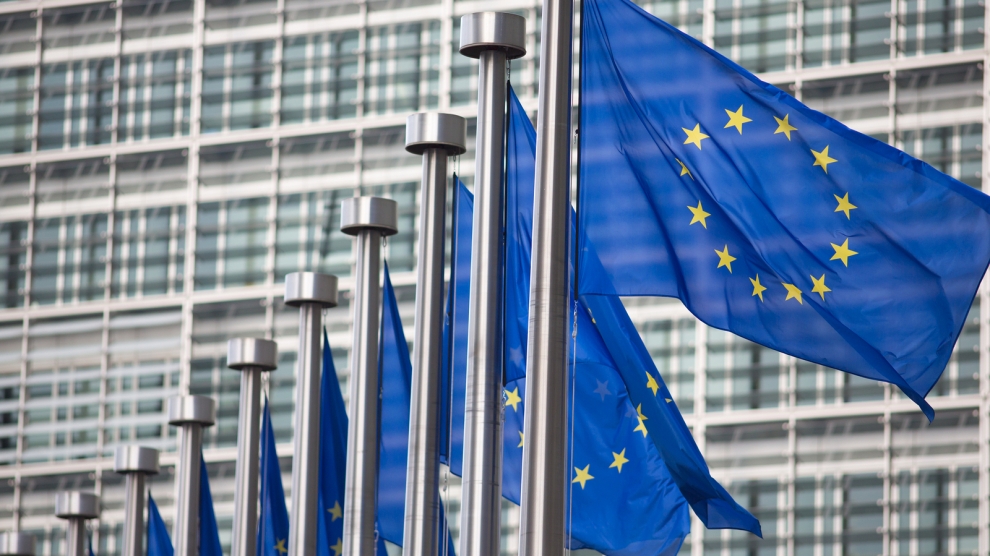
This week, the European Commission approved the disbursement of 36 million euros in grant money for the Republic of Moldova. The announcement was made by Deputy Director-General for Neighbourhood Policy and Enlargement Negotiations at the European Commission, Katarina Mathernova, who paid an official visit to the Republic of Moldova between September 13-15, together with Managing Director for Russia, Eastern Partnership, Central Asia, Regional cooperation and OSCE, at the European External Action Service, Michael Siebert.
The EU officials had meetings with President Maia Sandu, Minister of Foreign Affairs and European Integration, Nicu Popescu, Speaker of Parliament, Igor Grosu, Prime Minister of the country, Natalia Gavrilita, as well as key representatives of Government, international financial institutions and the civil society, according to a press release issued by the Delegation of the European Union to the Republic of Moldova.
Beside such topics as the EU-Moldova relations and prospects, the priorities of the reform agenda of the new Moldovan Government, preparations for the Eastern Partnership Summit at the end of the year and the Transnistrian conflict settlement, the officials also discussed the EU assistance in support of reforms and the Economic Recovery Plan for Moldova, which was announced in June with a total EU support of 600 million euros over the next 3 years.
“The first measures under the Economic Recovery Plan will shortly materialize, with the expected disbursement of 36 million euros in grant money under budget support programmes to support the authorities’ efforts to fight against the consequences of the pandemic. Moldova can count on EU’s assistance on its path to reforms and to recovery, bringing tangible results to citizens,” Katarina Mathernova stated.
The plan is based on assistance provided by the European Union through various bilateral and regional instruments, aiming to mobilize the funds in the form of grants, loans, guarantees and macro-financial assistance.
“The Economic Recovery Plan for the Republic of Moldova involves much more, not just this financial support provided immediately. It must help digital transformation, strengthen infrastructure, energy efficiency, education and support small and medium-sized enterprises,” the EU official also said.
As Prime Minister Natalia Gavrilita informed, “The Economic Recovery Plan and the 5 flagship initiatives for Moldova in the Eastern Partnership will directly contribute to the reform and consolidation of institutions, stimulate long-term socio-economic development, bring direct benefits to citizens, and unleash new economic opportunities through promoting the green agenda and digitization. Small and medium-sized enterprises (SMEs) have been hit hard by the crisis. Promoting and diversifying access to finance and reducing collateral requirements will be essential in supporting economic operators. We are grateful to the EU partners who will launch two programs to support 50 000 independent Moldovan SMEs to adapt to the new conditions.”
President of the Republic of Moldova, Maia Sandu, welcomed the decision of the European Union to disburse about 745 million lei in grant money, as the official page of the President’s Office announced. “EU support comes after a long period of freezing of European assistance, caused by former governments. We managed to relaunch the political dialogue with the European Union and resume financial assistance. The Republic of Moldova is gradually regaining the trust of its strategic partners. This European support is also a signal of encouragement for the new Government team in its commitment to clean up the institutions, fight corruption and launch development programs in the country,” said Maia Sandu.
Photo: unknown
Economy
Romania and Moldova signed a partnership memorandum pledging to cooperate in promoting their wines
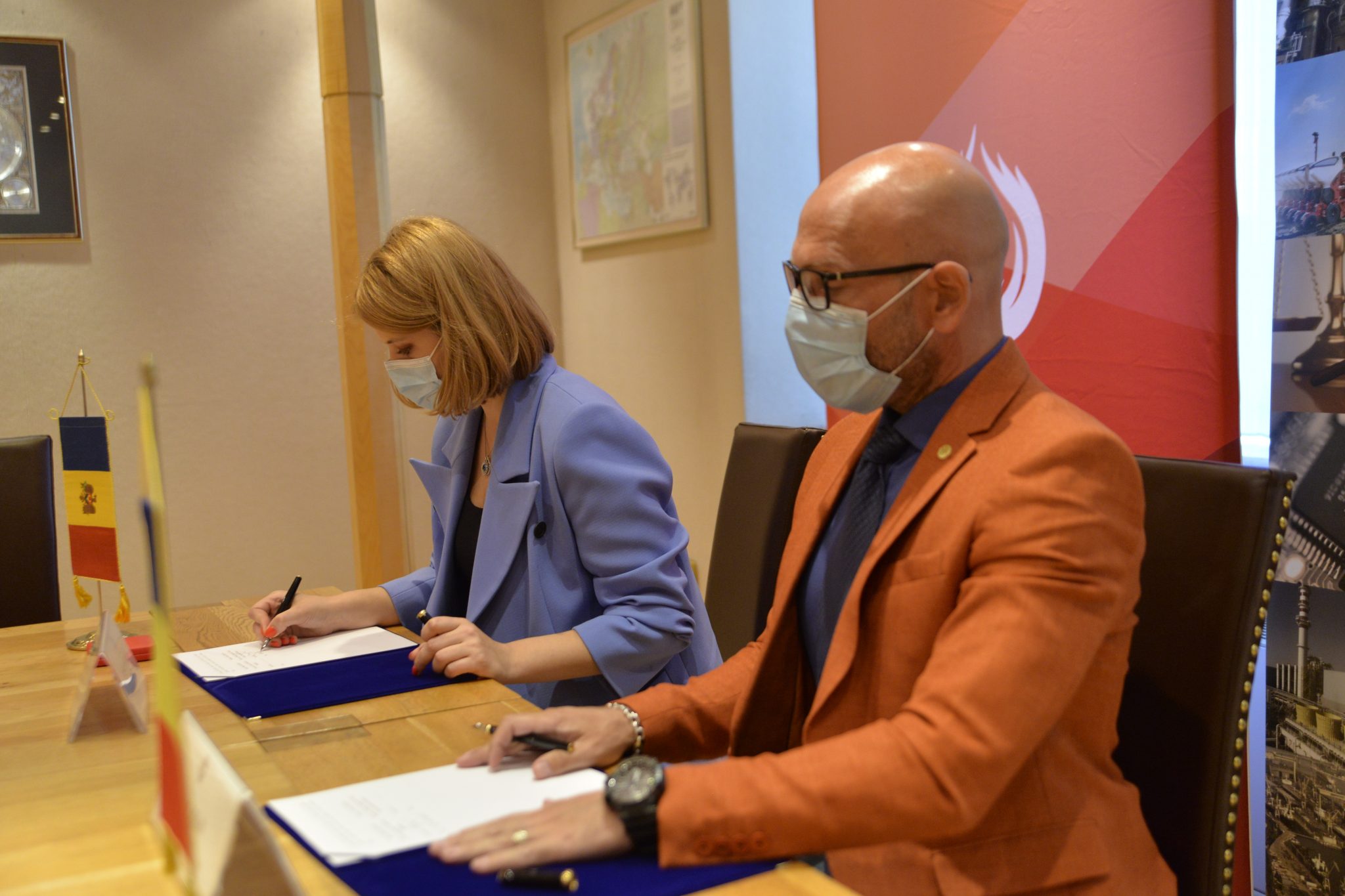
The Chamber of Commerce and Industry of Romania (CCIR) and the National Office for Vine and Wine (NOVW) of the Republic of Moldova signed, last week, a memorandum of cooperation on organizing joint promotional activities in the markets of common interest, as the CCIR announced.
China, Japan or the USA are just some of the markets targeted by the Romanian and Moldovan institutions. The memorandum also involves advertising activities for wines from common indigenous varieties, promoting the oeno-tourist region, developing a tourist route in the two states, exchange of experience, study visits, and mutual support in identifying new export opportunities. “We are very confident that this collaboration between our organizations will lead to sustainable economic growth and a higher degree of well-being among Moldovans and Romanians,” claimed Deputy Secretary-General of CCIR, Bogdan Visan.
On the other hand, Director of the NOVW, Cristina Frolov, declared that no open competition with Romania is aimed at the governmental level of the Republic of Moldova. “This request for collaboration is a consequence of the partnership principle. Romania imports 10-12% of the wine it consumes, and we want to take more from this import quota. Every year, the Romanian market grows by approximately 2.8%, as it happened in 2020, and we are interested in taking a maximum share of this percentage of imported wines without entering into direct competition with the Romanian producer,” the Moldovan official said. She also mentioned that Moldova aims at increasing the market share of wine production by at least 50% compared to 2020, and the number of producers present on the Romanian market – by at least 40%.
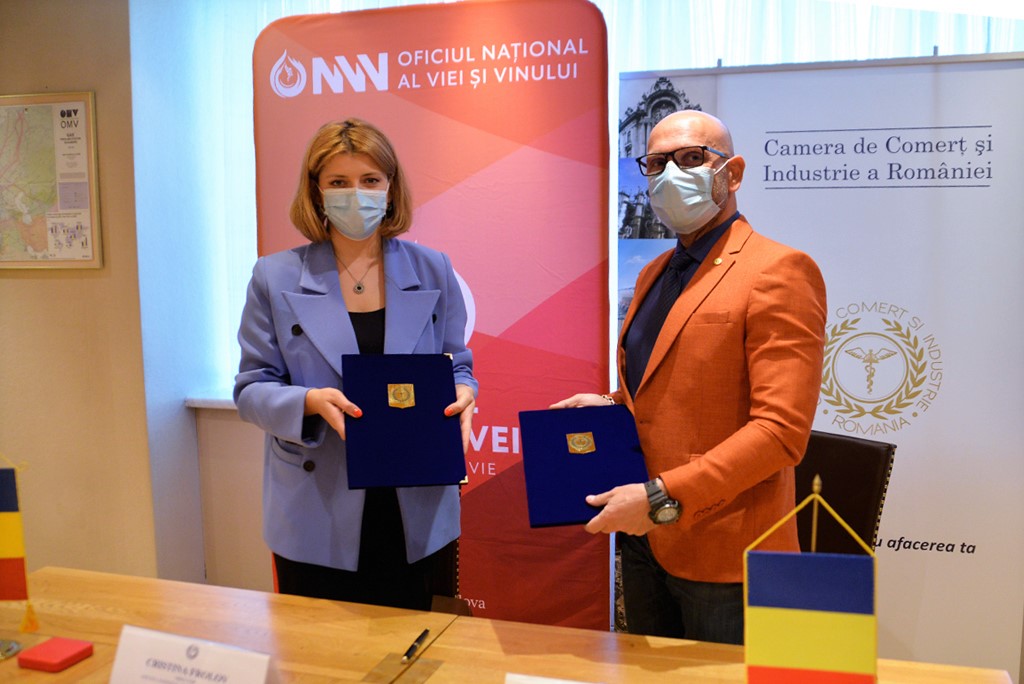
Source: ccir.ro
**
According to the data of the Romanian National Trade Register Office, the total value of Romania-Moldova trade was 1.7 billion euros at the end of last year and over 805 million euros at the end of May 2021. In July 2021, there were 6 522 companies from the Republic of Moldova in Romania, with a total capital value of 45.9 million euros.
The data of Moldova’s National Office of Vine and Wine showed that, in the first 7 months of 2021, the total quantity of bottled wine was about 27 million litres (registering an increase of 10% as compared to the same period last year), with a value of more than one billion lei, which is 32% more than the same period last year. Moldovan wines were awarded 956 medals at 32 international competitions in 2020.
Photo: ccir.ro
Economy
Moldova’s hope to be a top walnut exporter and its main difficulties
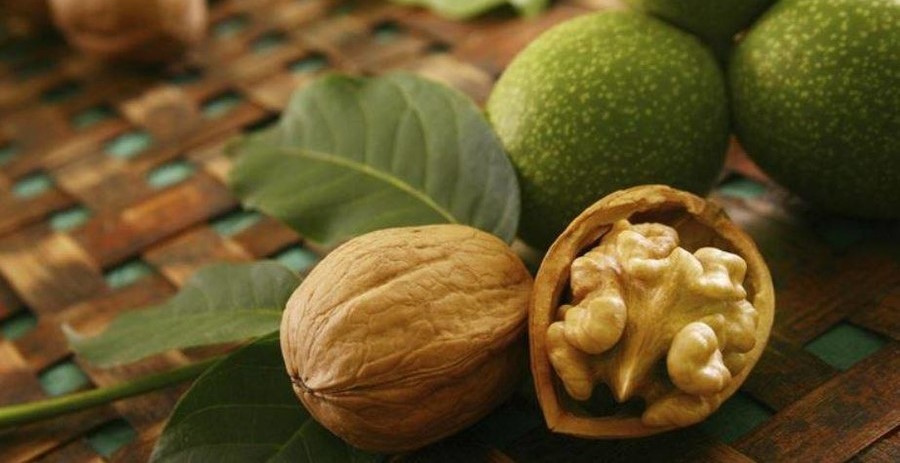
The Republic of Moldova has perfect weather conditions for growing walnut trees, that creating a great potential of walnut production and trade, especially on international markets, where the demand is way higher than the product’s supply. National and international experts believe that the country’s walnut production industry is on the verge of important transformations, which could lead to increased yields, quality and competitiveness worldwide.
According to authorities, Moldova exports 34-35 thousand tons of walnuts in shell, which is about 7% of the total export of fruit and 5% of the total export of horticultural products. The export value is assessed as being $120 million, that being 57-60% of the total fruit export value and about 50% of horticultural export value. Most of walnut crops are exported to the EU countries, such as France, Germany, the Netherlands, Romania and Austria. The country’s exports were among the world’s top 10 when it comes to the highest dollar value of the product during 2020.
Viorel Gherciu, Minister of Agriculture and Food Industry, pointed out that the production in the domestic walnut industry has increased by 55% in the last five years, which ranks Moldova among the main producers in the world.
“The biggest opportunity for this industry is that we are in the geographical proximity of the largest walnut import area in the world, which is the European Union, with almost 40% of total imports in the world. We are on the EU border, with privileged relations, with an Association Agreement. We already enjoy a good relationship in working with European importers, they trust our processors. A very close collaboration has been created and this is, in fact, the guarantee for those who invest in the area,” claimed the president of the Walnut Producers Association, Oleg Tirsina.
The data provided by the National Bureau of Statistics show that there are 34.7 thousand hectares of walnut plantations in the country. 20.90 hectares are represented by orchards. 75% of planted orchards are formed of old varieties trees. 30-35% of the exported production comes from orchards, the rest comes from individual farmers and plantations along the roads. This means that the quality of walnut production is not at its maximum potential. Developing commercial plantations through orchards modernization and extension of walnut varieties would provide double yield and better quality, experts say.
Governmental support in the form of subsidizing solutions, foreign investments and credit options are indispensable for the industry development. One of the financing options is the credit line of the European Investment Bank Project. Since 2016, 15 producers and processors of nuts, almonds and hazelnuts have benefited from these loans with the total amount of investments worth 8.7 million euros. A further extension of the project would provide another 60 million euros for the modernization of the horticultural sector in general and for harvesting organic walnuts in particular.
Photo: heymoldova.com


